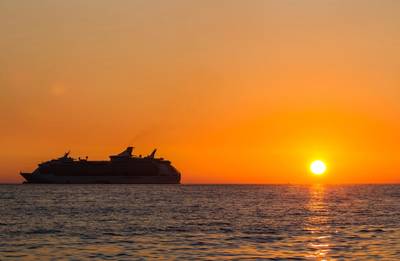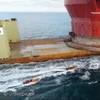DNV Issues Guidance on Passenger Vessel Blackouts
A newly published guidance paper from DNV seeks to support the prevention and mitigation of blackouts impacting passenger vessels.
With blackout incidents on cruise ships on the rise, DNV has created a new guidance titled ‘Managing the risk of blackouts’ which addresses the main causes and associated risks, while offering recommendations and best practices on how to avoid them and reduce the likelihood of their occurrence.
In 2019 there were 12 reported power-loss events on cruise ships that resulted in full or partial blackout while in transit or maneuvering – up from four events in 2018. Although the majority of incidents occur in open water with minimal consequences, they represent a major accident hazard and, in certain situations, result in loss of propulsion which may pose an imminent threat to the ship, its passengers and crew.
While in recent years there has been a lot of focus on sustainability factors and cost saving measures, DNV urges owners and operators not to lose sight of the safety element.
“Factors such as new fuels, change of speed and other measures to remain compliant with EEXI and CII regulations are high on ship owners’ agendas. We also see a considerable focus on keeping opex and capex costs in check after two years with reduced revenue. While dealing with all these challenges we urge ship owners not to lose sight of safety. By increasing awareness of what to do to avoid and manage blackouts we want to contribute positively to building trust across the sector,” said Hans Eivind Siewers, Segment Director for passenger ships and ro-ro at DNV Maritime.
In the new paper, DNV outlines a stepwise approach that centers on a simplified barrier-risk model. A simplified ‘bow tie’ model is used to present the threats and technical/operational barriers that contribute to increasing/decreasing the likelihood of blackout, and the mitigating barriers for supporting recovery. The paper’s five-step structure makes the information and practical tools easy to access and implement.
Rami Nurminen, Director Technical Assurance at Royal Caribbean Cruises, confirms that value of the guidance for cruise operators: “This is a great initiative that combines design principles, technical commissioning and human factors. A holistic approach is essential to maintaining design principles throughout system development, integration and final testing – not least operator familiarization and training of new crew members,” he said.
In summary, the guidance paper is intended to support a step-change in safety for operators, from gaining an overall understanding of blackout causes, defining safety ambitions and prudently managing conflicting goals (such as decarbonization and cost pressures), to identifying appropriate operational and technical measures to reduce risk based on cost-benefit evaluations.
The paper also describes the mandatory requirements for blackout prevention and recovery that provide a minimum technical standard for newbuildings, including Safe Return to Port (SRtP) regulations under SOLAS and additional measures such as DNV’s Operational Reliability (OR) class notation, which specifically targets resilience and availability of propulsion, steering, electrical power and maneuverability.
“DNV is off course open to engaging with operators who want to leverage our operations expertise to improve their organization and ensure their ships are optimally ready to start sailing again. This also feeds into the newbuilding equation in terms of specifications and what barriers are built into the design to minimize blackout risks,” Siewers added.














